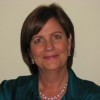By Patricia O'Connor
Patricia O'Connor, Associate Director of Nursing, Neuroscience Mission, MUHC, presents a promising practice model instituted in Wisconsin —Produced as part of the MUHC-ISAI's 2009 program
A network of health centres in Wisconsin called ThedaCare has made some very brave and courageous decisions to take apart care processes, figure out what the patient needs and then find the most effective and efficient way to provide that. The result is a rare demonstration of the power of teamwork.
Changes, which began several years ago, aimed to reduce both waste and risk in hospital practices. The exercise ended up redefining the roles of health professionals involved in patient care and prompted the establishment of a pilot Collaborative Care Unit in the Appleton Medical Center to test new ways of working. Patricia O’Connor, Associate Director of Nursing at the Neurosciences Mission at the MUHC, went to observe the Unit as part of her research on interdisciplinary work redesign innovations.
The emphasis is on collaboration and the roles of doctors, pharmacists, nurses and others involved in the patient’s care have been redefined. Doctors make their rounds with a pharmacist, a nurse and sometimes a care manager, who handles matters like insurance coverage and home care.
“Nurses, physicians and pharmacists examine patients together when they come into hospital,” she described, “and see them together every day of their stay. The team has pre-huddles and post huddles with real-time information about what’s happening with patient care.”
Tasks once done by registered nurses now are done by licensed practical nurses or certified nurse assistants. The goal is to make better use of the skills of each. Nurses focus on coordinating and managing the patient’s care, education and discharge planning. In its first year, the unit reduced the average patient’s stay by 20%.
Ms. O’Connor was most impressed by the change in the level at which nurses were working. “Nurses there say they’ve had more opportunity to practice what they were taught in the past two years than in all their prior years of nursing experience,” she said. Not delivering medications or doing tests, but looking at what needs to be done to move care along, taking care of patients’ psycho-social needs, patient education and discharge planning. “Most importantly,” Ms. O’Connor noted, “they’re not running around, as nurses do everywhere else.”
ThedaCare plans to model other units in its hospitals on the Collaborative Care Unit example.





